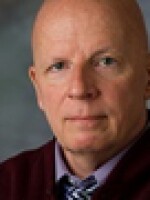A report issued today finds that older rural New Yorkers have poor access to healthcare, nutritious food and high-speed internet.
The AARP says more than a million rural New Yorkers are over the age of 50 – and their numbers are growing.
In "Disrupt Disparities: Addressing the Crisis for Rural New Yorkers 50+," AARP suggests what it sees as achievable solutions.
The report finds the pandemic and the rapid aging of the rural population are exacerbating disparities rural New Yorkers have long faced in accessing healthcare, high-speed internet, telehealth and support for unpaid family caregivers.
Democratic State Comptroller Tom DiNapoli says although the state has taken steps to make broadband available to most New Yorkers, there is still a digital divide in rural parts of the state.
“What we've really found during the pandemic is that high speed connections are imperative for economic development and equal opportunity," said DiNapoli. "Our analysis found many predominantly rural areas remain underserved by broadband infrastructure. In addition, approximately one in three New York households with income less than $20,000 lacked access to broadband at home. “
The report gives an example: 99% of people living in Manhattan and in Albany, Monroe and Erie counties have access to high-speed internet vs. just 24% in Hamilton County.
State Office for the Aging Director Greg Olsen:
"I live 10 miles west of downtown Albany. And it's apple trees and farms and lack of broadband, lack of service infrastructure, lack of capacity, and certainly workforce challenges," Olsen said. "So, you know, it's not unique to the many places we think of in the North Country, or the Southern Tier or Central New York, you could be living in an urban county that is also quite heavily rural."
Dr. Nicol Turner Lee with the Brookings Institute says COVID-19 transformed the way we live from analog to digital mode.
"We have to understand that the digital challenges that existed among seniors were present prior to this pandemic, and will continue to evolve as this new normal becomes digital," said Lee. "I'm writing my book about this death of analog, that analog service when I was working in Hamilton, New York, where people in town would come over to Ames on Saturdays and shop, and bring in kids and others to pick up stuff at that local store. And now, if you're not connected to the internet, not just like my folks that I interviewed across the country said that Facebook, because that's not the internet, but if you're not connected to the internet, you're not able to engage, I think in life's course, the mandatory things that allow you to eat, to sleep to live and to have better care."
State Senator Rachel May represents the 53rd District, which includes most of Syracuse, parts of Onondaga and Oneida counties, and all of Madison County. The Democrat says New York's Medicaid global spending cap that the Cuomo administration pursued for over a decade has created many of today's long-term care workforce issues. She supports legislation to repeal the cap.
"We've had a 2% spending cap, while the actual number of people on Medicaid has been growing far faster than that. So it's really created inequities," May Said. "We also heard about the insupportable pressures on nursing homes and assisted living facilities. Because of all the ever changing guidance they were receiving in the early stages of the pandemic and the burdensome reporting requirements that were absorbing way too much staff time. Managers were leaving. It was just - it caused a lot of problems. I'm hopeful that the new administration in Albany and the new head of the Department of Health will have this in mind and try to try to ease those burdens on those facilities.”
The AARP report proposes: increasing access to telehealth technology, equipment and training; equalizing home high-speed internet utilization across all ages and geographies by 2025; subsidies for low-income older rural New Yorkers for devices and subsidies for companies and municipalities to build and operate high-speed internet services where private investment is prohibitive.
The full report is available HERE.
Note: Disrupt Disparities: Addressing the Crisis for Rural New Yorkers 50+ is the latest in AARP New York’s multi-year initiative Disrupting Racial and Ethnic Disparities: Solutions for New Yorkers 50+, which began in January 2018.





